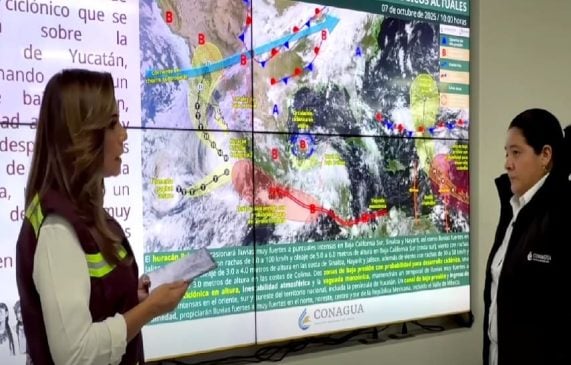Riviera Maya, Q.R. — UPDATED: The National Hurricane Centre is currently monitoring two new systems that have developed in the Atlantic. While one could develop further by late next week, the other is expected to become better organized within coming days.
The second system was detected Thursday evening in the eastern tropical Atlantic. UPDATE: Since Friday morning, the NOAA has located a third system, this time in the Gulf of Mexico.
“Another tropical wave between the west coast of Africa and the Cabo Verde Islands is producing minimal shower and thunderstorm activity. Some slow development of this system is possible through late next week while it moves slowly to the west-northwest over the eastern and central tropical Atlantic,” the NOAA reported early Friday.
However, the first of the two systems continues on its trajectory toward the Caribbean Sea. It is expected to reach the Lesser Antilles Monday from where it could develop into a storm by early next week.
“Showers and thunderstorms associated with a tropical wave over the central tropical Atlantic remain disorganized. Gradual development of this system is possible during the next few days, and a tropical depression could form some time next week while it moves westward, reaching the Lesser Antilles on Monday and continuing across the Caribbean Sea through the middle to latter part of the week.
Other than moving west northwest, a possible trajectory for the newest system (in yellow) has not yet been defined.
UPDATE: Friday afternoon, the NOAA reported on a third system in the Gulf of Mexico likely to affect Texas and Louisiana.
“A surface trough of low pressure over the northwestern Gulf of Mexico is producing a large area of disorganized showers and thunderstorms along and just offshore the coasts of Texas and Louisiana.
“This system is expected to meander near the coast through much of next week, and some slow development is possible if it remains offshore. Regardless of development, heavy rains could cause some flash flooding across portions of coastal Louisiana and the upper Texas coast during the next few days,” the NOAA reported in the Friday update.


